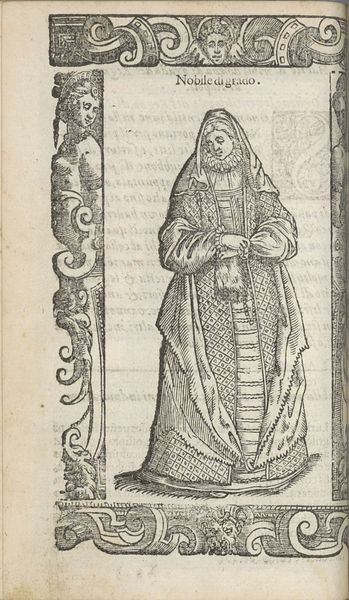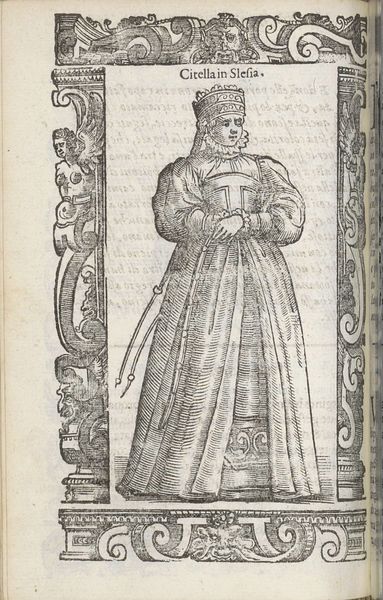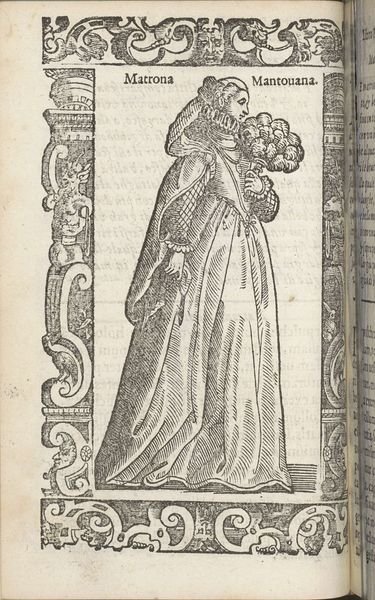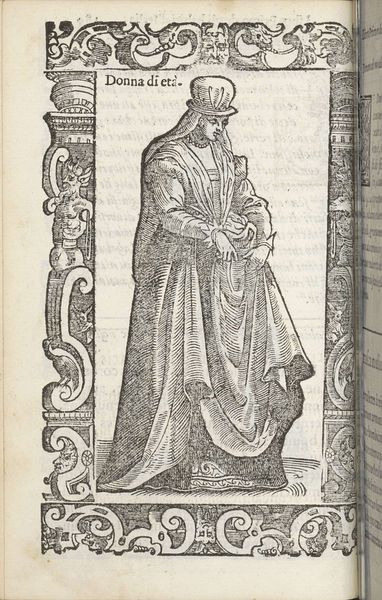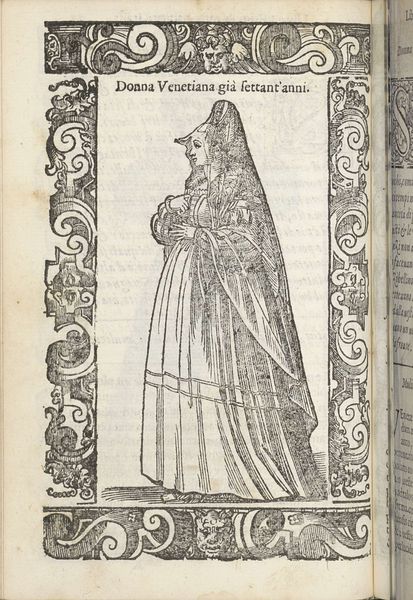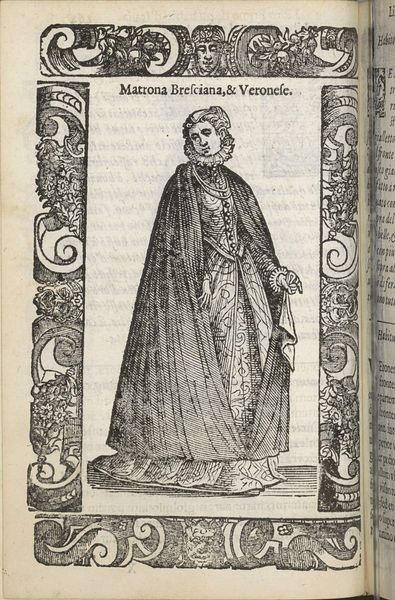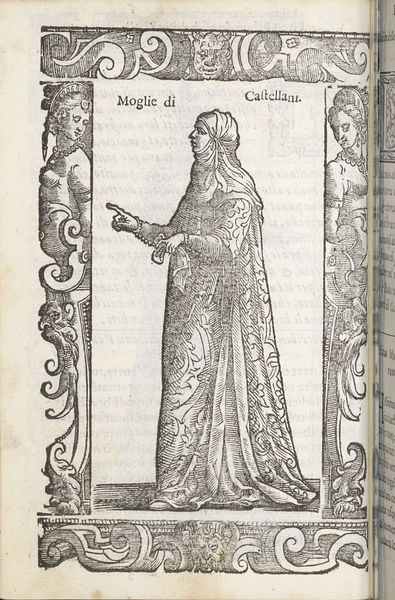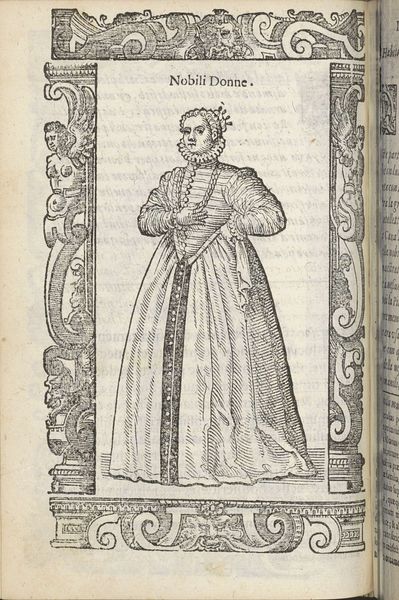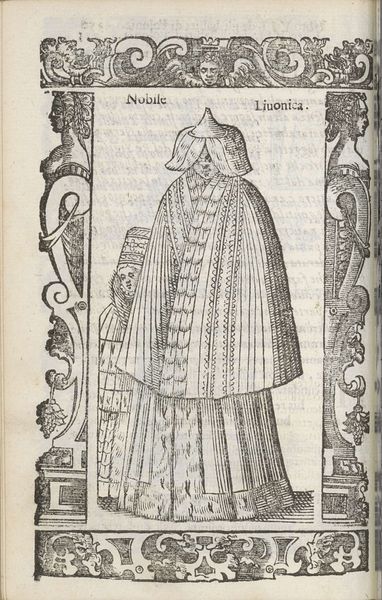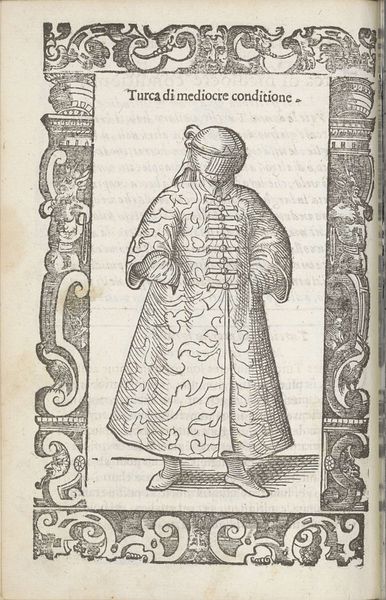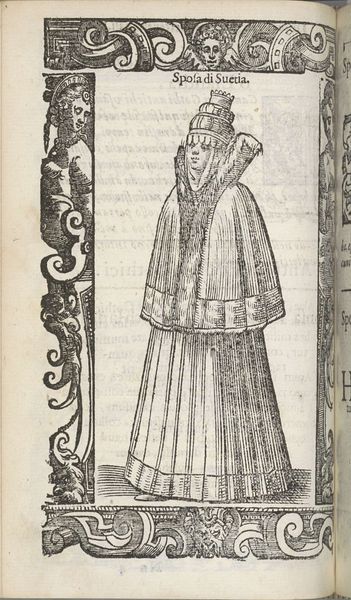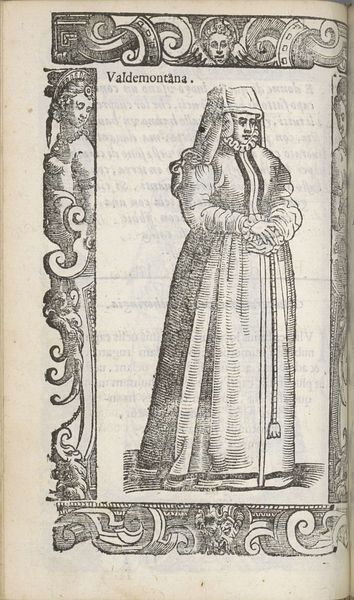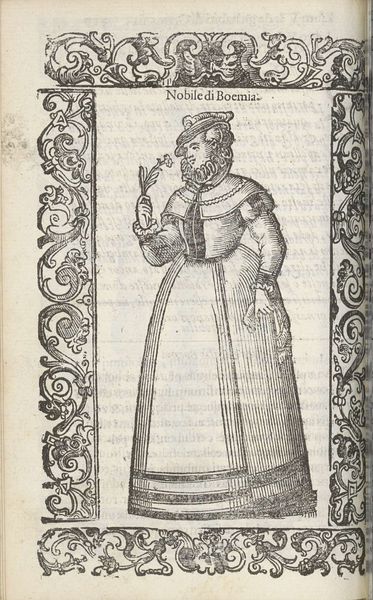
drawing, print, ink, woodcut, engraving
#
portrait
#
drawing
#
medieval
# print
#
ink
#
woodcut
#
genre-painting
#
engraving
Dimensions: height 167 mm, width 125 mm
Copyright: Rijks Museum: Open Domain
Curator: Here we have Christoph Krieger's "Weesmeisje uit Venetië" or "Orphan Girl from Venice," dating from 1598. It's a rather striking woodcut, wouldn't you agree? Editor: It is. A very quiet sorrow seems to radiate from her. It's also quite a busy little rectangle. Curator: In what way? Editor: The border alone is quite elaborate, with swirling patterns and classical heads. The main figure, the girl, is almost lost to it. It makes me wonder about the relationship of image and context. Is this a portrait, a social commentary, or something else entirely? Curator: It's fascinating you bring that up. Krieger produced these prints within larger publications. He wasn't just creating art; he was visualizing types, presenting, in a way, a visual sociology of the era, the book is almost a sort of visual inventory or social document. Editor: So the surrounding text and images give crucial context? That explains the framing! What exactly is she offering, I wonder? Curator: Hard to say, but that combined with the rosary beads suggest some sort of solicitation, possibly even… alms. The presentation of her poverty becomes almost performative within the frame of the print. She becomes a subject of study. Editor: That makes the emotional impact so much stronger, like the artwork is saying something about those who need something from us. Do we even really "see" them? In the end, a really thought-provoking image for such a tiny artwork. It makes me question so much about how we perceive and document each other. Curator: Indeed, Krieger gives us an early lens through which to examine those power dynamics. These images can speak volumes about a culture, its structures, and its attitudes toward the marginalized. Food for thought as we leave this work.
Comments
No comments
Be the first to comment and join the conversation on the ultimate creative platform.
